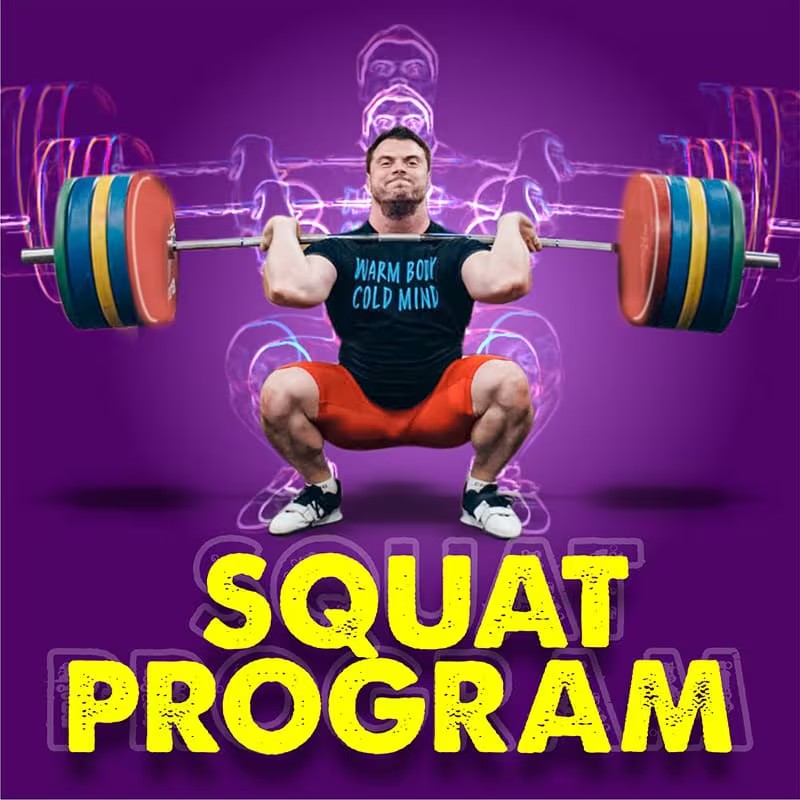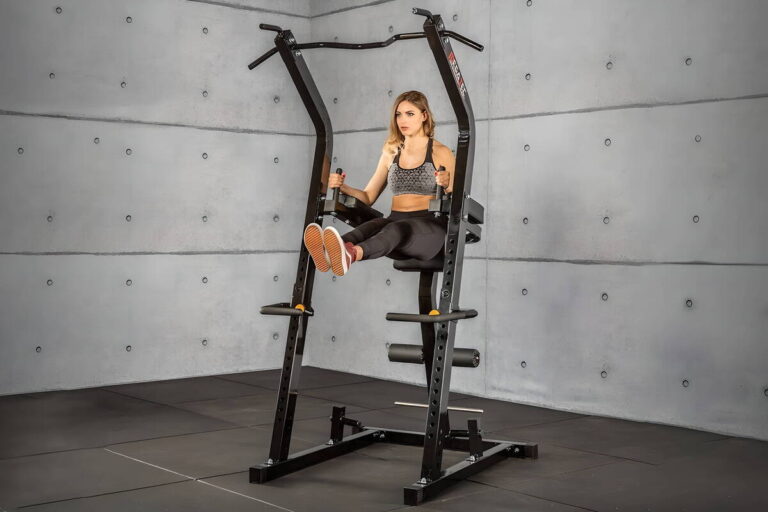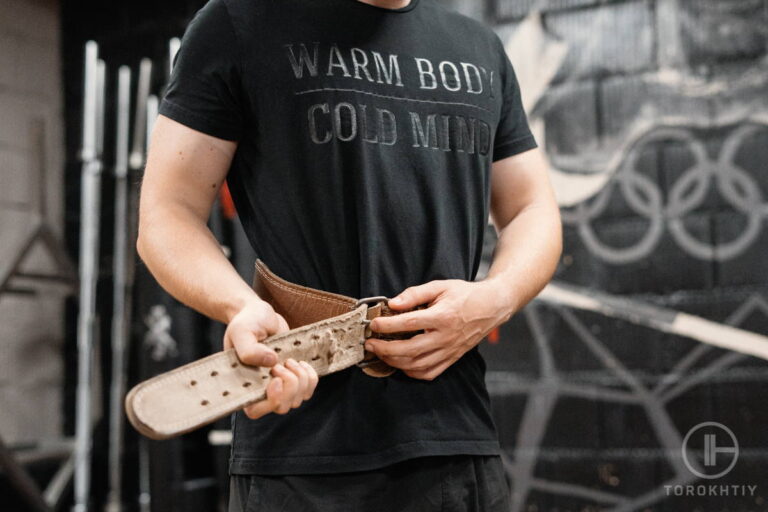6 Squat Stretches to Do Before & After Squatting
Are you struggling to do that ‘perfect’ deep squat?This is a common struggle many athletes face, and it’s the reason why you need to introduce squat stretches into your squat routine.
Our article is an in-depth guide to help you understand what squat stretches are, their benefits, and effective stretches you should include in your squat mobility routine.
Squat stretches are exercises done before and after a squat to engage the muscles required when performing this workout. Athletes usually stretch before squats to improve mobility, prevent injuries, and prepare the body for the range of motion needed during the activity.
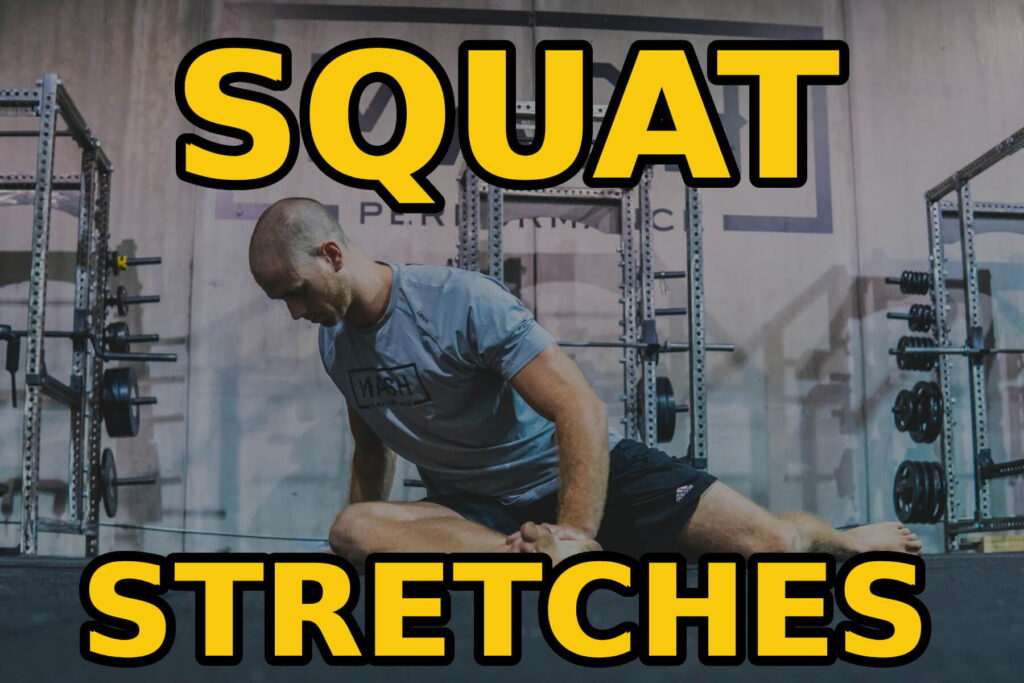
Squat Stretches: General Description
An athlete will include different variations of squats into their workout routine to:
- Improve overall fitness and strengthPosture
- Encourage muscle mass growthBack Strength
- Burn calories
- Strengthen the bones
- Provide improved performance in sports such as jumping and sprinting, etc.
Many athletes aim to achieve a good squat depth to get all the benefits this workout offers. However, some people struggle doing squats because they cannot position their body properly during the exercise or don’t have the proper mobility to reach the desired squat depth.
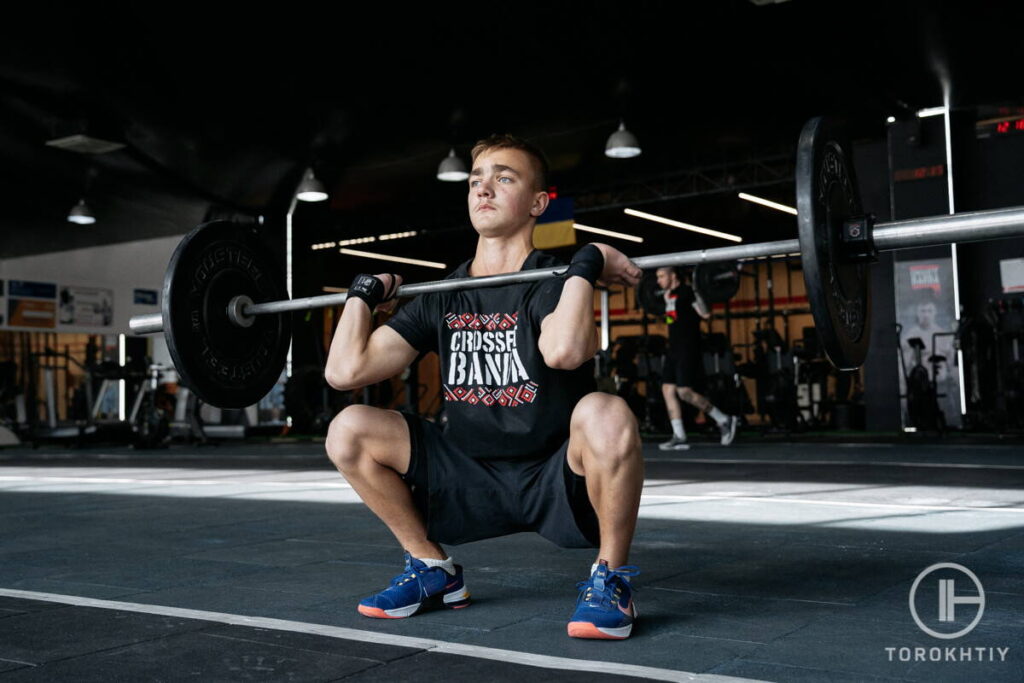
Stretching before squats can help you achieve a better squat depth. These stretches will lengthen the muscle or muscle groups you engage during the workout and make them mobile during the squat.
Muscle or muscle groups you should target when stretching are those that will benefit most from the squat. These include:
- Gluteus maximus, minimus, and medius ( muscles)Encourage muscle mass growthBack Strength
- Quadriceps (Front thigh muscles)
- Hamstrings (Back thigh muscles)
- Adductor (Groin)
- Hip flexors
- Calves
- Abdominal muscles such as the rectus abdominis, obliques, transverse abdominis, and erector spinae
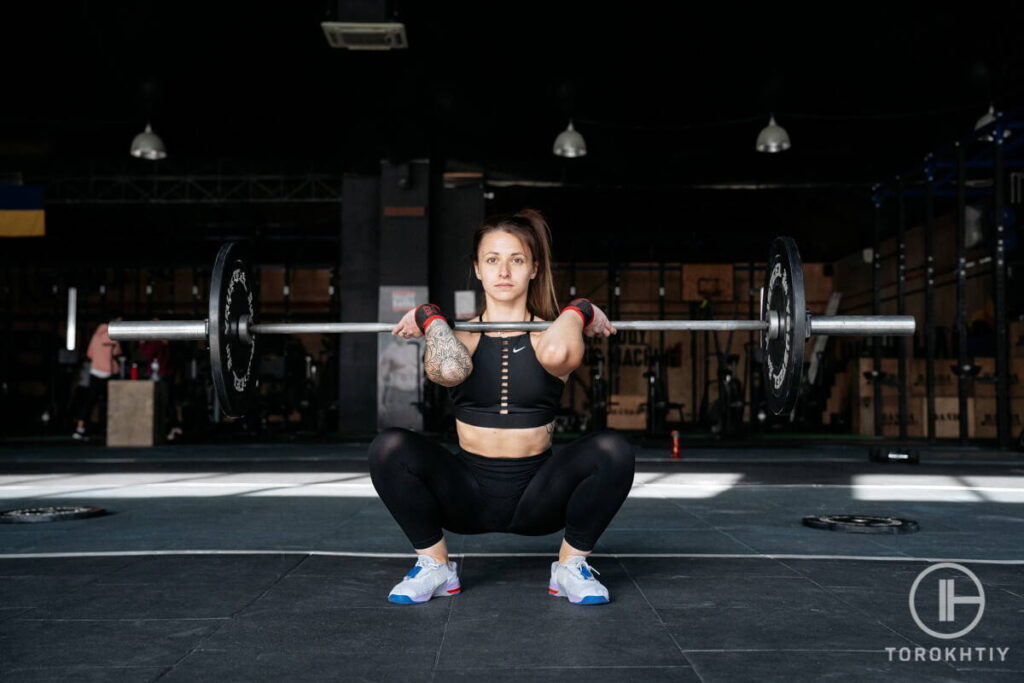
5 Reasons To Make Squat Stretches
What are some reasons you get if you include stretches before squats? Here are five reasons you should know.
1. They Improve Squat Performance
Your ability to do a full squat without difficulty or damaging muscles is what we are referring to as a good squat performance. Most people fail to achieve the needed squat depth/performance because their muscles are less flexible and strong. You can increase your squat performance by doing some stretching before the workout.
You can also stretch after squats. It could be immediately after you finish your reps, or you could do it later after you go out of the gym or before you sleep to prepare your body for the next squatting session.
2. Stretches Improve Squat Mobility
Mobility is a joint’s or muscle’s ability to move without restrictions. All the muscles engaged during the squat need to move without any limitations during the squat. Otherwise, it can lead to instability, leading to muscle damages or injuries.
The best way to ensure that all the engaged muscles move as needed is by stretching before the squat. Squat mobility exercises will reduce muscle tightness or stiffness and increase its function during the workout.
3. Reduce The Risk Of Getting Injured
Performing a squat badly by positioning your body inappropriately during this exercise can lead to injuries. Some common injuries include:
- Lower back aches due to strained, inflamed, or irritated spinal joints
- Pain in the hips
- Jumper’s knee
- Ankle pain
Stretching is a great way of reducing injuries during the workout since it increases the flexibility of the muscle tendons and warms up the muscles for the activity you are about to do.
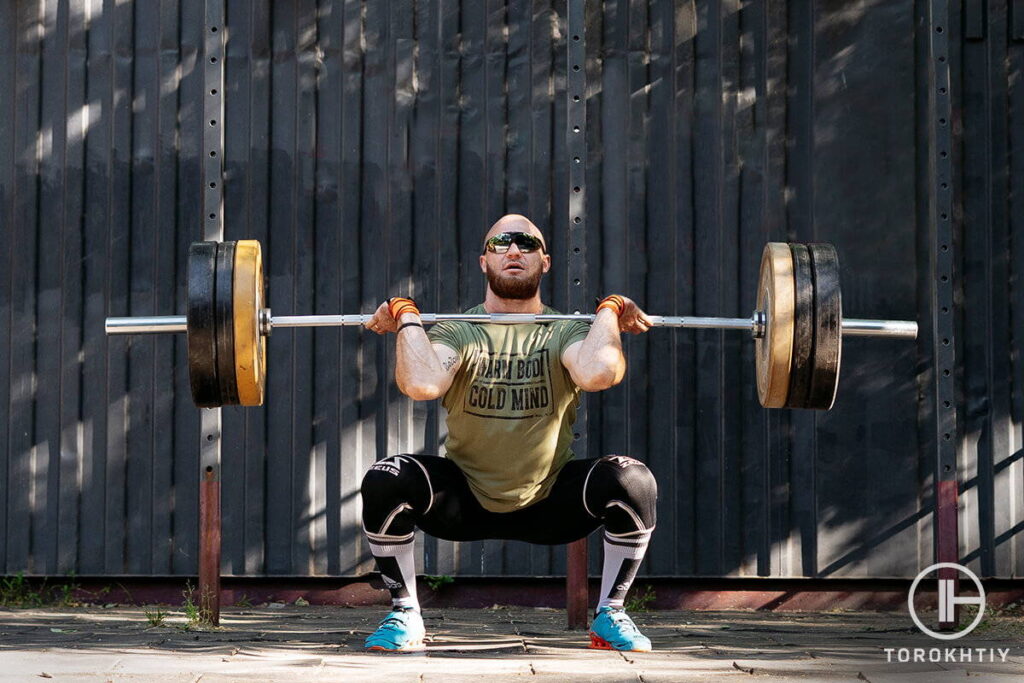
4. Increases Muscle Blood Flow
Your body’s muscles need a constant supply of blood to boost oxygen levels, deliver nutrients, and remove waste from them – according to an Ohio State University article on the benefits of stretching.
Stretching the muscles, you’ll engage during the squat for a few minutes before and after the squat will get the right amount of blood flowing into them. Muscles with good blood flow ensure that you:
- Get the right posture for the squat
- Reduce stiffness
- Help you do more reps since your muscles are stronger and warmer
- Reduce injuries
- Increase muscle growth
- Prevent excessive soreness after squats
- Quickens recovery
5. Improves Your Posture
Poor body posture during a squat can cause huge damage to different muscles – especially the ones you engage during the workout. This happens because a bad posture affects the overall structure of your body, blood circulation, and the production of hormones.
Stretching is a good way to get a good posture for the squat. These exercises will help elongate the muscles, improve how blood flows to those muscles, and prepare the body for the exercises you are about to do.
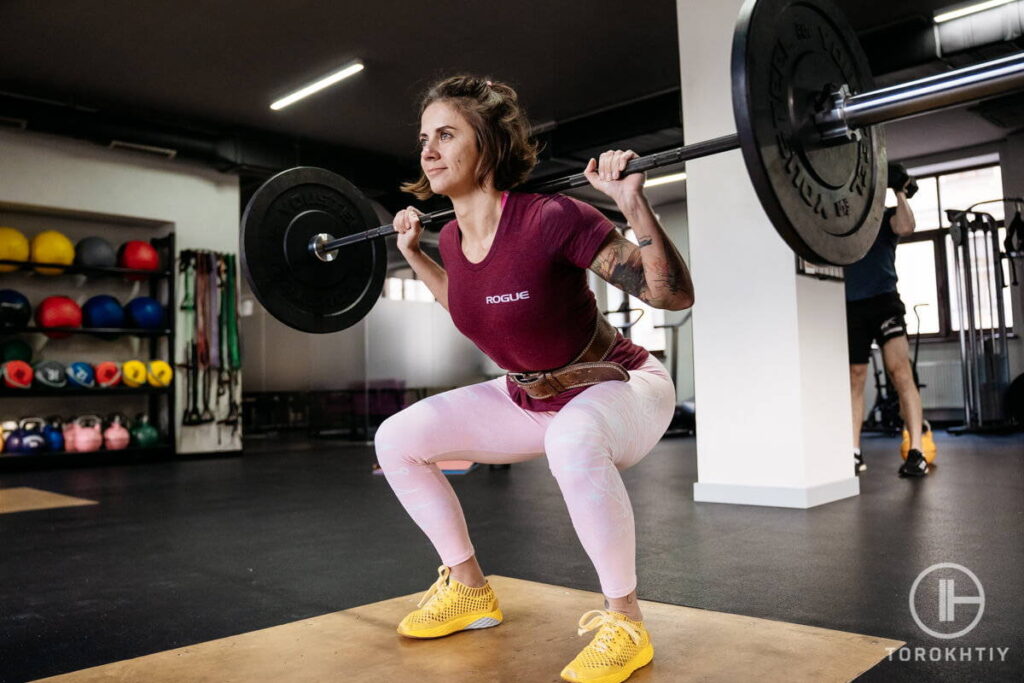
Static Vs. Dynamic Squat Stretches
You’ll come across different concepts of muscle stretching but the two main types of stretches: dynamic or static squat stretches. Which one should you use to stretch for squat mobility?
Let’s define these types of stretches first.
Both squat stretches target the muscles you’ll use during a squat and your squat performance.
The difference between the two is:
Static stretches require you to hold on to a stretch for some time without moving the muscle, while dynamic stretches are stretches that you do with repetitive and slow movements on the target muscle.
Experts recommend doing a mix of both stretches since they all carry similar benefits, such as warming up your muscle, increasing blood flow, and improving your range of motion.
On the other hand:
Dynamic squat stretches are the best stretches before squatting since there’s less likelihood of overstretching a muscle. The intensity is usually moderate, allowing you to move in and out of a stretch position easily. These stretches also mimic the movements you’ll be doing while doing a squat.
Various studies discourage athletes from doing static stretches before a workout because they can take away the muscle’s power, speed, and force production, ultimately reducing the number of squat reps you do.
But that doesn’t mean you should avoid static stretches. They can be effective exercises if you do them after the workout or later.
How, then, do you do static squat stretches safely?
- Keep the intensity of the stretches moderate: Don’t overstretch the muscle to avoid risking muscle injury
- Don’t hold to a position for too long: The recommended hold time should be between 10- 60 seconds.
- Stretch should also not be long: Allocate 10-15 minutes for the routine.
🔻12 Week Squat Program by Oleksiy Torokhtiy
Do you want to double your squat strength? In just 12 weeks, you’ll be able to boost your squat results.
This program transforms any ordinary squat into a powerful athletic movement.
What’s included:
- 12 weeks of squat programming;
- Effective combination of sets, reps, and weights;
- Fully designed and coached by Oleksiy Torokhtiy;
- Over 60+ movements, banded work, and weight training;
- Accessory work for core, joint stability and injury prevention;
- Max out on back squat and front squat at the end.
Start now and boost your squat results!
Squat Stretches for Peak Performance
Learning how to stretch for squats can be a challenge, especially when you find out that there are numerous stretch options on the internet. Here are some basic mobility exercises for squats you can do before or after the squat.
1. Couch Stretches
The couch stretch is a static stretch that improves mobility and relieves tight quadriceps and hip flexors. All you need for this exercise is a cushion or a mat to place your knee on and provide comfort during the exercise. Here’s how you do the stretch.
- Place the mat or cushion next to a wall.
- Get into a kneeling position while facing away from the wall.
- Drive one of your knees (while placing it on the mat) towards the wall while facing upwards. Your shin should be in contact with the wall, and your toes should face upwards.
- Extend the other leg to form a right-angled knee angle.
- Ensure that your body is as upright as possible during the stretch to enable full activation of the hip flexor and the quads.
- Hold on to this position for about 30 seconds and switch legs.
2. Pigeon Stretches
The pigeon stretch is a static stretch that helps to improve the range of motion of the hip muscles, glutes, and piriformis muscles. Athletes can also use this stretch after squats to relieve low back pain.
Here’s how you do it:
- Get to a push-up position. Your hips should be in a straight position.
- Bring one of your legs forward and bend it so the top of your foot (instep) rests on the ground. Your knees and shin should also lie on the floor.
- Stretch your back foot backwards such that your toes are on the ground.
- Take the stretch further by stretching your hands forward as you lean forwards.
- Hold this position for 30-60 seconds, then switch leg positions.
3. Hamstring Stretches
You can stretch your hamstring using several squat mobility stretches. Here’s an easy stretch you should consider trying.
- Place one leg in front of the other while in a standing position.
- Slightly bend the back leg but let the front leg remain straight.
- Bend forwards towards the front leg and hold the position for about 30 seconds.
- Repeat the same process for the other leg.
4. Calf Stretches
Weightlifters use numerous stretches for squat mobility for the calves.One way to stretch your calf is by using a stretch-out strap. Here’s how to do it.
- Place one of your legs on your bench or edge of your bed while sitting on the bench or bed. Your other leg should remain on the floor.
- Place the strap on the toes of your lifted leg and pull it towards you while you lean forward.
The exercise also targets your hamstrings and the back of your knee.
5. Ankle Stretches
The ankles play an important role in preventing injuries during a squat. One stretch used to increase the ankles’ mobility when squatting is using ankle circles. The exercise is done by simply rotating your ankles in clockwise and anticlockwise directions while standing.
You can also use a foam roller. Place the foam roller below your ankles and rotate the ankles in alternating clockwise and anticlockwise directions while sitting down. Ensure that you don’t move any other sections of your leg during this stretch.
Another exercise you can do to stretch your ankle for squat mobility is the resting squat. It can also help in improving squat depth. Here’s how to do it:
- Stand with your legs apart (shoulder width) and your toes facing forward.
- Bend with your knees and hips and go as low (Your goal is to bring your knees close to your chest). Hold on to that position for a few minutes.
- Lean forwards but ensure that your spine is in a neutral position. You should also ensure that you distribute your bodyweight equally across both feet.
6. Glute Stretches
Glutes play a significant role during your squat. Tight glutes can lead to tension in your back, hips, and the areas surrounding this muscle.
One stretch you can do to increase mobility for squat is the figure 4 stretch. Here’s how you do it.
- Lie on your back, grab your left ankle (to stretch your left glute), and place it on the hip area of your right leg.
- Grab the back of your right thigh around the knee joint and pull it towards your chest.Hold on to this position for about 10-30 seconds.
- Switch legs to stretch your right glute.
FAQ
What Should I Stretch For Squats?
You should stretch muscles or muscle groups that are essential during squatting. These include the hip, calves, hamstrings, obliques, ankles, and mid-back muscles. Note that you don’t need to stretch any other muscles.
Is It Ok To Stretch After Squats?
Research shows that stretches can help your muscles recover quickly if you stretch your muscles after the workout. These stretches also reduce soreness and the risk of injury after the training or when doing other activities.
Should I Static Stretch Before Squatting?
Static stretches are recommendable after the workout and not before because you can overstretch more than you should, which ultimately affects your workout performance. Research shows that people who do static stretches before a workout do fewer reps than if they do dynamic stretches.
How Long Should A Squat Stretching Session Be?
You should stretch 5-10 minutes before and after the squat. Each stretching exercise should be 30-60 seconds long. You should also be gentle on your muscles during squat stretches to prevent injury or muscle fatigue.
Conclusion
Squat mobility stretches are essential to your squat routine. They ensure that the muscles you’ll engage during the workout are active and ready for movement. What other stretches do you do in your workout routine? Feel free to share your comments and any questions about squat stretches.
Also read:
- Shoulder Warm up Exercises
- Neck Mobility Exercises
- Thoracic Mobility Exercises
- Scapular Mobility Exercises
- Mobility Routine for Lifters
- Shoulder Mobility Exercises
- Tricep Stretches
- Lat Stretches
- 10-Week Squat Program
- 12-Week Squat Strength Program
References:
- 45 Squat Variations to Keep You on Your Toes // Healthline: https://www.healthline.com/ health/squat-variations
- Deep Squat: How to Do It, Benefits, and Muscles Worked // Healthline: https://www.healthline.com/ health/fitness /deep-squat
- Why stretching is more important than you think // OSU: https://wexnermedical.osu.edu/ blog/benefits-of-stretching
- Stretching Before and After Exercise: Effect on Muscle Soreness and Injury Risk // NIH: https://www.ncbi.nlm.nih.gov/ pmc/articles/ PMC1250267/
- How to squat? Effects of various stance widths, foot placement angles and level of experience on knee, hip and trunk motion and loading // NIH: https://www.ncbi.nlm.nih.gov/ pmc/articles/ PMC6050697/
- Stretching Before and After Exercise: Effect on Muscle Soreness and Injury Risk // NIH: https://www.ncbi.nlm.nih.gov/ pmc/articles/ PMC1250267/
- Current Concepts in Muscle Stretching for Exercise and Rehabilitation // NIH: https://www.ncbi.nlm.nih.gov/ pmc/articles /PMC3273886/
- A review of the acute effects of static and dynamic stretching on performance // Paulogentil: https://shorturl.at/gvIV3
- Effects of Static Stretching on Squat Performance in Division I Female Athletes // NIH: https://www.ncbi.nlm.nih.gov/ pmc/articles/ PMC5065324/
Why Trust Us?
With over 20 years in Olympic Weightlifting, our team does its best to provide the audience with ultimate support and meet the needs and requirements of advanced athletes and professional lifters, as well as people who strive to open new opportunities and develop their physical capabilities with us.
By trusting the recommendations of our certified experts in coaching, nutrition, dietology, and sports training programming, as well as scientific consultants, and physiotherapists, we provide you with thorough, well-considered, and scientifically proven content. All the information given in the articles concerning workout programming, separate exercises, and athletic performance, in general, is based on verified data. We ensure that you can rely on our professionals’ pieces of advice and recommendations that can be treated as personalized ones which will benefit you and fully meet your needs.
The product testing process is described in more detail here
Author: Zinaida Bondarenko
Coach, Physiotherapist
Physical rehabilitation experience: 10 years
Zinaida was a member of the national team of Ukraine in rhythmic gymnastics, accumulating 15 years of professional sports experience. She holds certifications in functional training, rehabilitation, kinesiotherapy, specializing in working with athletes across various domains: recovery, rehabilitation, functional and mobility training, General Physical Preparedness (GPP), as well as injury prevention through specific program design. Moreover, she focuses on athlete and coach education to enhance performance and prevent injuries.

